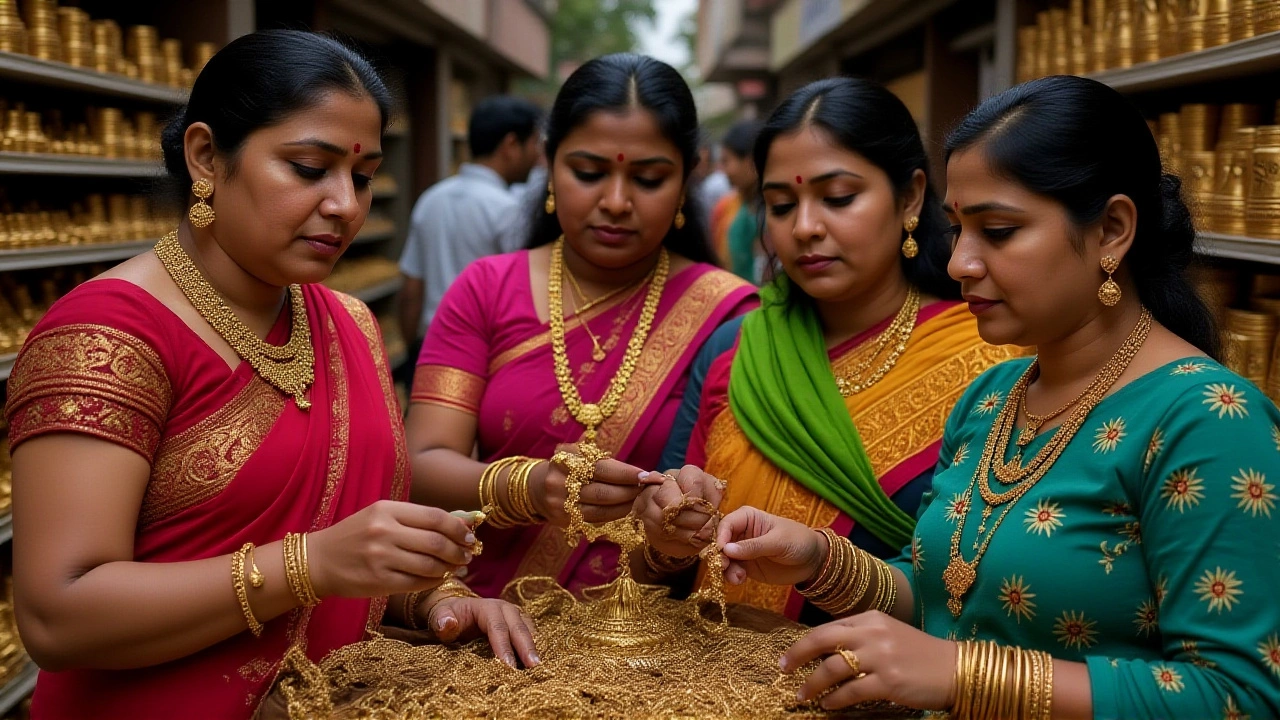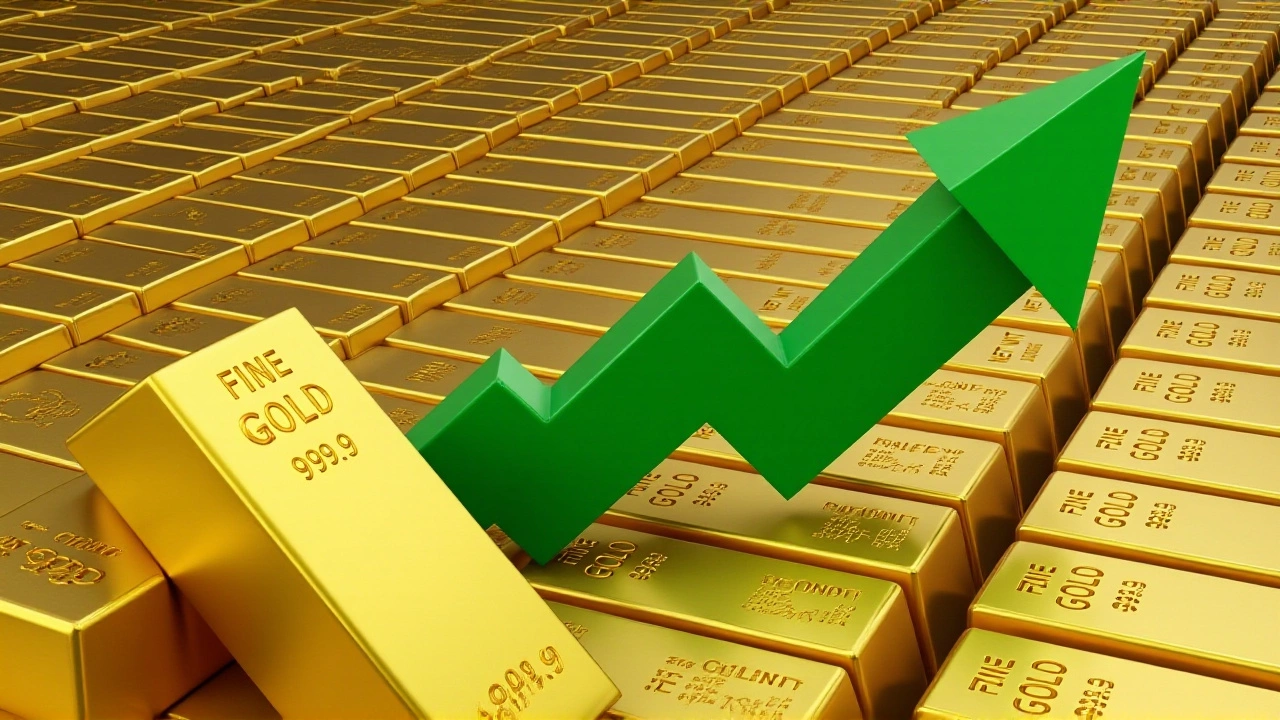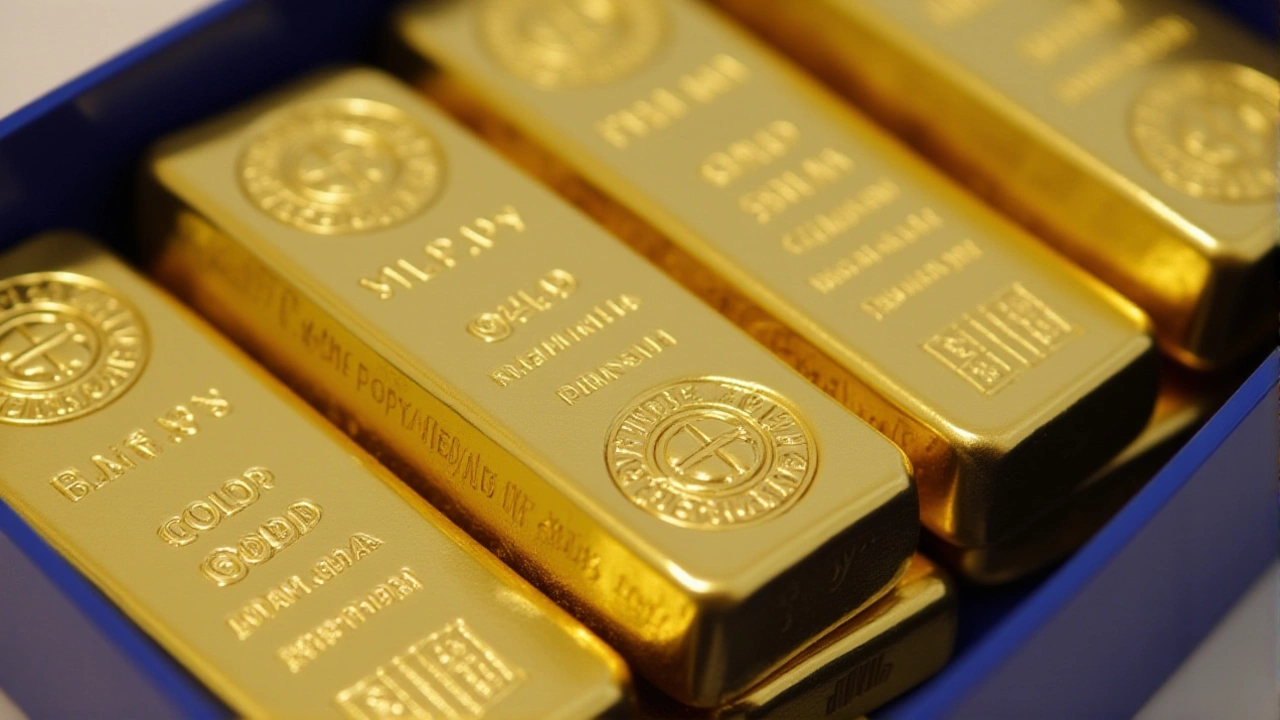
When MP Breaking News reported a 22‑carat gold price of ₹1,18,300 per 10 g on Wednesday, investors across India took notice. The update came on Gold Market Update 15 October 2025Delhi, a day that also saw the Multi Commodity Exchange (MCX) futures climb to ₹1,27,500 for the same weight. While some regional traders quoted a modest ₹380 drop, the overall trend signaled a pre‑festival rally fueled by global tensions and hopes of lower interest rates.
Today's Prices Across Major Indian Markets
Below is a snapshot of quoted rates for 10 grams on the ground:
- Delhi: 22‑carat ₹1,18,300, 24‑carat ₹1,29,040, 18‑carat ₹97,120.
- Mumbai: 22‑carat ₹1,18,260, 24‑carat ₹1,28,900, 18‑carat ₹96,970.
- Kolkata: 22‑carat ₹1,18,210, 24‑carat ₹1,28,800, 18‑carat ₹96,970.
- Chennai: 22‑carat ₹1,18,350, 24‑carat ₹1,29,100, 18‑carat ₹97,700 (the highest 18‑carat price among surveyed cities).
- Indore & Bhopal: both around 22‑carat ₹1,18,280, 24‑carat ₹1,28,950.
Silver, meanwhile, hovered near ₹1,90,000 per kilogram according to the same source, while CNBC TV18 quoted MCX silver futures at roughly ₹1,60,000 per kilogram.
Why Prices Are Fluctuating: Global and Domestic Drivers
Two forces dominate the narrative. First, the lingering standoff between the United States and China has investors scrambling for safe‑haven assets. "Geopolitical risk is a classic catalyst for gold," said a senior analyst at Angel One during a brief interview. Second, speculation that major central banks may soon cut rates is feeding expectations of lower real yields, another gold‑friendly scenario.
Adding to the mix, the International Monetary Fund’s latest outlook hinted at a slower‑than‑expected slowdown in global growth, nudging the dollar weaker. Goldprice.org logged the spot price at $4,160.57 per ounce, up 0.81%, while silver fell 0.96% to $51.98 per ounce. The gold‑to‑silver ratio ticked higher to 80.05, a metric traders watch for signs of relative strength.

Regional Variations and Retail Realities
India’s retail gold market still bears the imprint of GST (3%) and making charges, which differ city‑to‑city. For example, Chennai’s 18‑carat price tops the list because local silversmiths have higher labor costs, while Mumbai’s rates sit slightly lower due to larger volume sales that dilute mark‑ups.
Digital platforms such as Angel One’s app are also nudging transparency. Their July‑August report highlighted a “price compression” where the spread between quoted rates and MCX futures narrowed to under ₹1,000 per 10 g – a stark contrast to the ₹4,000‑plus gaps seen two years ago.
Expert Take: What Investors Should Expect
Financial writer Anita Desai, who covers commodities for CNBC TV18, warned, "If the US‑China friction escalates, we could see another jump of 2‑3% in gold within a week, especially as the Diwali window looms." She added that the bank‑fixed rate, the price at which banks sell gold to retailers, might settle around ₹1,27,000 for 22‑carat, offering a modest cushion for stray buyers.
Conversely, a senior official from the Ministry of Finance, speaking on condition of anonymity, suggested that any drastic move in the Reserve Bank of India’s repo rate before the end of 2025 would likely calibrate demand, possibly tempering the current surge.

Looking Ahead: Festival Season and Policy Outlook
Diwali falls on 27 October 2025, and historically, gold demand spikes 15‑20% in the week leading up to the festival. That seasonal surge, combined with the already heightened global risk premium, could push 24‑carat prices past ₹1,30,000 per 10 g if supply chains remain stable.
On the policy front, the government is reviewing the standard making charge schedule, a move that could either steepen or flatten the retail price curve. Analysts say any reduction in the making charge would immediately translate to a lower effective price for end‑consumers, even if wholesale rates stay firm.
Frequently Asked Questions
How will the upcoming Diwali festival affect gold prices?
Diwali traditionally drives a 15‑20% jump in demand as families buy jewelry for celebrations. Coupled with global risk factors, analysts expect 24‑carat gold to breach the ₹1,30,000 mark per 10 g if supply remains uninterrupted.
Why are there different gold rates in Delhi, Mumbai, and Chennai?
Regional variations stem from differing GST applications, making‑charge structures, and local labor costs. For instance, Chennai’s higher making charge pushes its 18‑carat price to ₹97,700 per 10 g, whereas Mumbai’s larger trade volume keeps its rates slightly lower.
What role do US‑China tensions play in Indian gold prices?
Heightened geopolitical risk makes gold an attractive safe‑haven. When US‑China relations sour, global investors shift funds into gold, driving up international spot prices, which then ripple through Indian markets via MCX futures and import‑linked pricing.
Could an RBI interest‑rate cut lower gold prices?
A rate cut would lower the real yield on bonds, making non‑yielding assets like gold more attractive, potentially sustaining or even raising prices. However, a cut could also boost rupee liquidity, which might temper buying pressure in the short term.
How reliable are MCX futures for predicting retail gold rates?
MCX futures are a leading indicator because they reflect market expectations of global price movements. Yet, retail rates can diverge due to GST, making charges, and local demand spikes, especially during festival periods.
